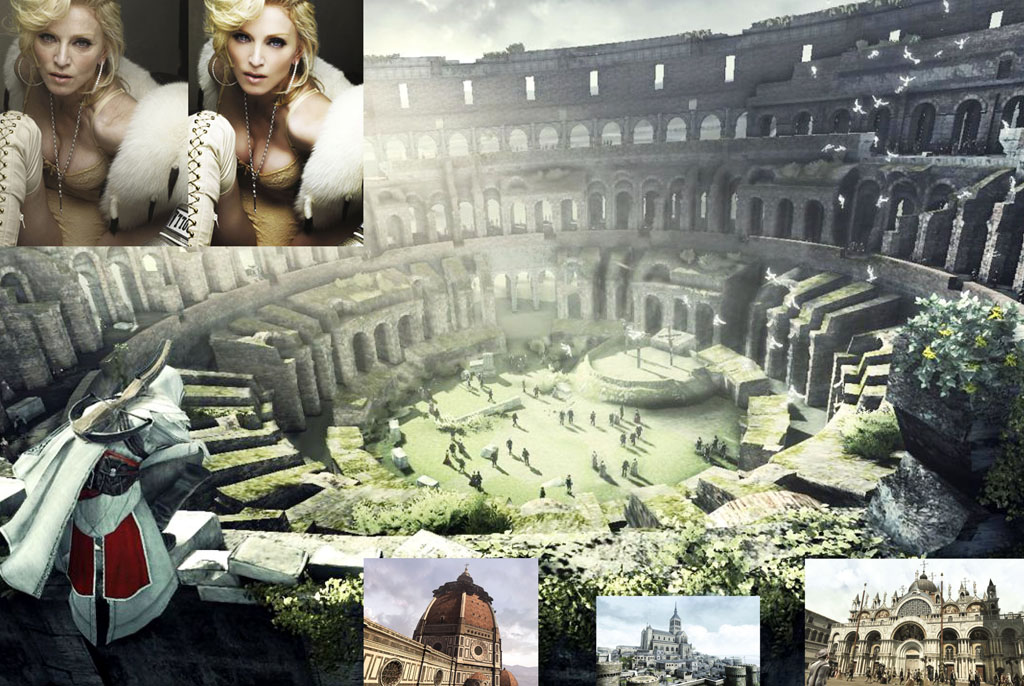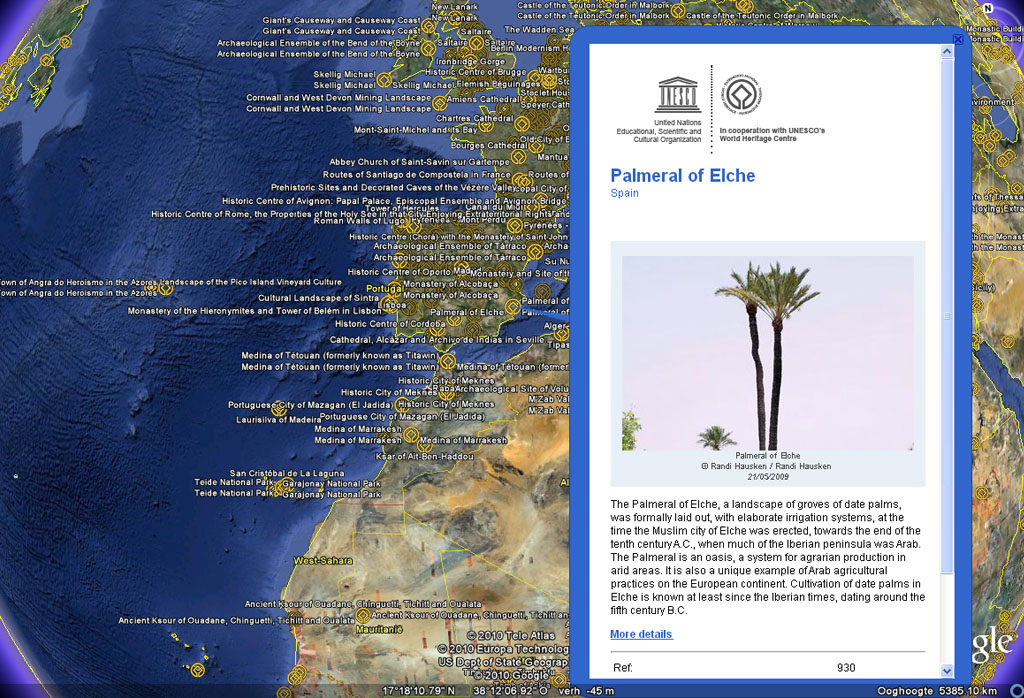22-09-24 // THE DIGITAL MONUMENT

Dante Alighieri in La Divina Commedia Illumina Firenze, by Domenico di Michelino (1417–1491)
Martyrs of the Past
All sites of the world are born in original sin, and may only be redeemed by becoming World Heritage Sites. Yet we come to salvation through suffering, and once out of purgatory these martyrs should shine a light onto the world. However, blind faith prevented them from seeing that the carnal pleasures of our earthly existence are preferable to the heavenly promises of paradise, for their new religion was too demanding and required unrelenting sacrifice.

Colosseum, Rome, World Heritage Site since 1990, background image by Assassin’s Creed: Brotherhood
Isn’t it in the power of Photoshop to make celebrities, like Madonna, look their best? Could this be the clue to solving all the problematic issues between preservation and development?
A new profession emerged that consists of expert Photoshop beautification of models and stars. World Heritage Sites could be approached similarly by photoshopping away their unavoidable signs of decay, their inconvenient necessary additions, or the disturbing new constructions surrounding them.
However, this does not seem to realise the full potential of the idea. The improvements in digital technology are growing vertiginously. Possibilities seem endless. Total recreations are possible. The digital image is an exact duplicate of the real.

Locating UNESCO Digital World Heritage Sites on Google Earth
If we take this to the next level we could recreate digitally the entire list of World Heritage Sites and relieve them of the unfair constraints of real preservation. The Digital Site will never decay, will never be threatened, and will always keep its universal value.
We propose adding UNESCO Digital World Heritage Sites as a new category.
A Digital Site is a record of a historical site. Technology allows preservationists to record a site accurately to a fraction of a millimetre.
There is no limit to how much can be preserved, and the preservation of sites will have no impact on living cities. Buildings and public areas can be allowed to decay, to change, to redevelop and even to physically disappear.
Could Digital World Heritage Sites become the utopia of preservation?

St Mark’s Basilica, Venice, World Heritage Site since 1987, background image by Assassin’s Creed: Brotherhood
I Had a Dream
But there is a place where everything can be preserved –
there are no limits -, where every moment of history can be kept, where there is no need for sacrifices,
where there is no decay, no threat, where the past is accessible for all…
This place is the Digital.
Let’s trust the digital when the real cannot deliver. Total recreations are possible.
Let the digital save our cities from the tyrannical rules of nostalgia.
Title: The Digital Monument
Project: Research on preservation
Type: Self-initiated study
Status: Published
Client: Self-initiated
Publications: As part of the article “In the Name of the Past: Countering the Preservation Crusades” by Beatriz Ramo – STAR strategies + architecture in MONU #14
Team: Beatriz Ramo, Philip Vandermey (STAR strategies + architecture); Bernd Upmeyer (BOARD)